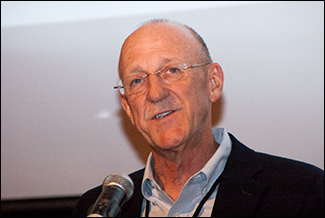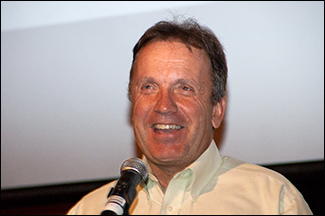Accelerating Progress in Beef Improvement
by Troy Smith, field editor
LOVELAND, Colo., June 20, 2018 — Stewart Bauck predicts a bright future for the beef cattle industry, thanks to advancements in tools for genetic selection that have been developed in recent years. Bauck, who is vice president of Neogen, welcomed an audience gathered in Loveland, Colo., for the Neogen Geneseek Symposium. The program was hosted June 20 in conjunction with the 2018 Beef Improvement Federation Convention.

Stewart Bauck, vice president of Neogen, noted Neogen’s evolution and growth as a company in providing cattle breeders with tools for beef improvement.
Bauck noted Neogen’s own evolution and growth as a company in providing cattle breeders with tools for beef improvement. In recent years, Neogen has developed nearly 50 custom genotyping assays for its customers, entering partnerships with Angus, Simmental and other breed associations. Bauck said Neogen’s growth to include offices in Brazil, Scotland and Australia, as well as the United States, has been based on three pillars of success: high-quality data, fast turnaround and fair pricing.
Bauck introduced symposium speaker Mitch Abrahamsen of Recombinetics, who talked about expectations for the role gene-editing technology will play in future beef improvement. Abrahamsen said gene editing can hasten genetic selection and make planned breeding more precise. He explained how this technology is different from transgenesis, which introduces genetic material from one species into another, yielding a genetically modified organism (GMO).
“Gene editing is not about GMOs,” emphasized Abrahamsen. “We work only with genes that exist within a species, making small changes to deploy genetic variation that already exists in nature.”

Mitch Abrahamsen of Recombinetics, talked about expectations for the role gene-editing technology will play in future beef improvement.
Abrahamsen said use of gene editing is being driven by consumer expectations for how food is produced and resulting effects on animal welfare and the environment. Practical applications include introduction of a polled gene to a horned breed, or introduction of genes associated with heat tolerance. The technology may also allow transfer of resistance to specific diseases.
“It’s a technology that can complement traditional selection practices and genomics to accelerate genetic improvement,” said Abrahamsen, explaining that regulatory approval is being sought in the United States and internationally.
Editor’s Note: The articles used within this site represent a mixture of copyrights. If you would like to reprint or repost an article, you must first request permission of Angus Media by contacting the editor at 816-383-5200; 3201 Frederick Ave., Saint Joseph, MO 64506. Angus Media claims copyright to this web site as presented. We welcome educational venues and cattlemen to link to this site as a service to their audience.


